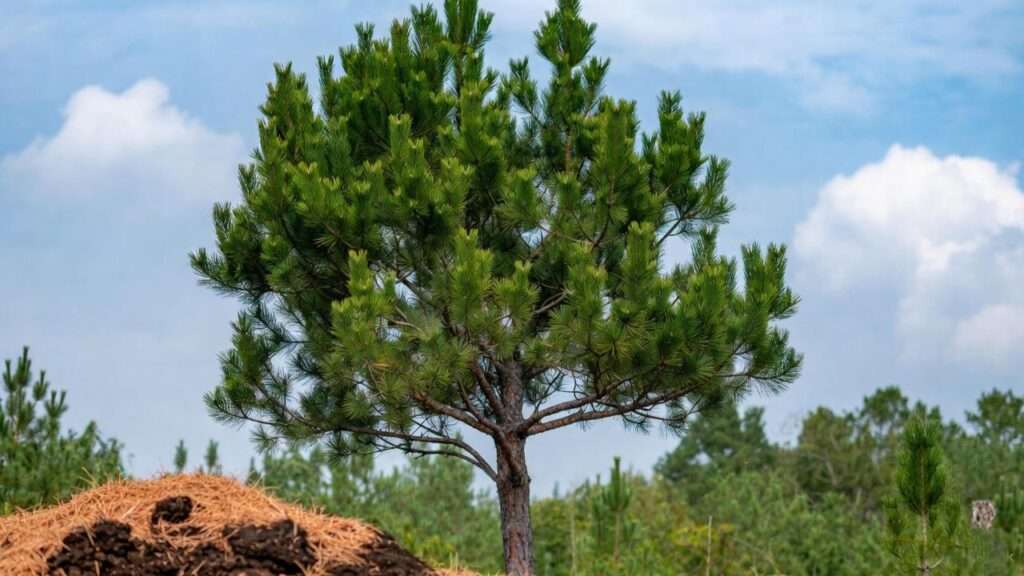Picture this: a tiny pine tree seed in your hand, holding the potential to become a towering evergreen that shades your yard, purifies the air, and stands as a testament to your dedication. Growing pine trees from seed is a rewarding journey that connects you with nature and leaves a lasting legacy. Whether you’re a seasoned gardener or a beginner, this guide will empower you to transform that humble seed into a thriving pine tree. With expert-backed techniques, you’ll learn how to germinate, nurture, and care for your pine, avoiding common pitfalls along the way. Ready to plant the seeds of success? Let’s dive in! 🌿
This comprehensive guide, crafted by a horticulture expert with over a decade of experience in tree propagation, draws on scientific principles and real-world success stories to ensure your pine-growing journey is a triumph. Expect actionable steps, troubleshooting tips, and insights to make your pine tree thrive for generations.
Why Grow Pine Trees from Seed? 🌿
Growing pine trees from seed offers unique benefits, but it also comes with challenges that require patience and skill. Understanding both sides prepares you for a successful journey.
The Benefits of Starting from Seed
Starting with a pine tree seed is cost-effective compared to purchasing saplings, which can cost $20–$100 each. Seeds allow you to grow rare or native pine species, like the Eastern White Pine or Bristlecone Pine, preserving genetic diversity. Environmentally, pines are powerhouses, sequestering carbon and supporting wildlife like birds and squirrels. Plus, the emotional reward of nurturing a tree from seed to maturity is unmatched—a living legacy for your garden or community.
Challenges to Anticipate
Pine trees take time, often 5–10 years to reach significant size, and germination can be tricky due to seed dormancy. Seedlings are vulnerable to pests, diseases, and environmental stress. However, with proper techniques, these challenges are manageable. Patience and knowledge are your greatest allies.
Expert Insight: The American Conifer Society emphasizes that growing pines from seed fosters biodiversity, especially for endangered species like the Whitebark Pine, which is critical for high-altitude ecosystems.
Understanding Pine Tree Seeds: The Foundation of Success 🌰
Before planting, you need to understand your pine tree seed—its type, source, and preparation needs. This knowledge sets the stage for healthy germination.
Types of Pine Tree Seeds
Pine species vary widely, each with unique seed characteristics. For example:
- Eastern White Pine (Pinus strobus): Small, winged seeds with a 30–60-day stratification period.
- Scots Pine (Pinus sylvestris): Medium-sized seeds, ideal for beginners due to reliable germination.
- Ponderosa Pine (Pinus ponderosa): Larger seeds requiring longer stratification (60–90 days).
Research your local climate to choose a species that thrives in your region. For instance, Scots Pine suits colder zones (3–7), while Ponderosa Pine prefers warmer climates (5–9).
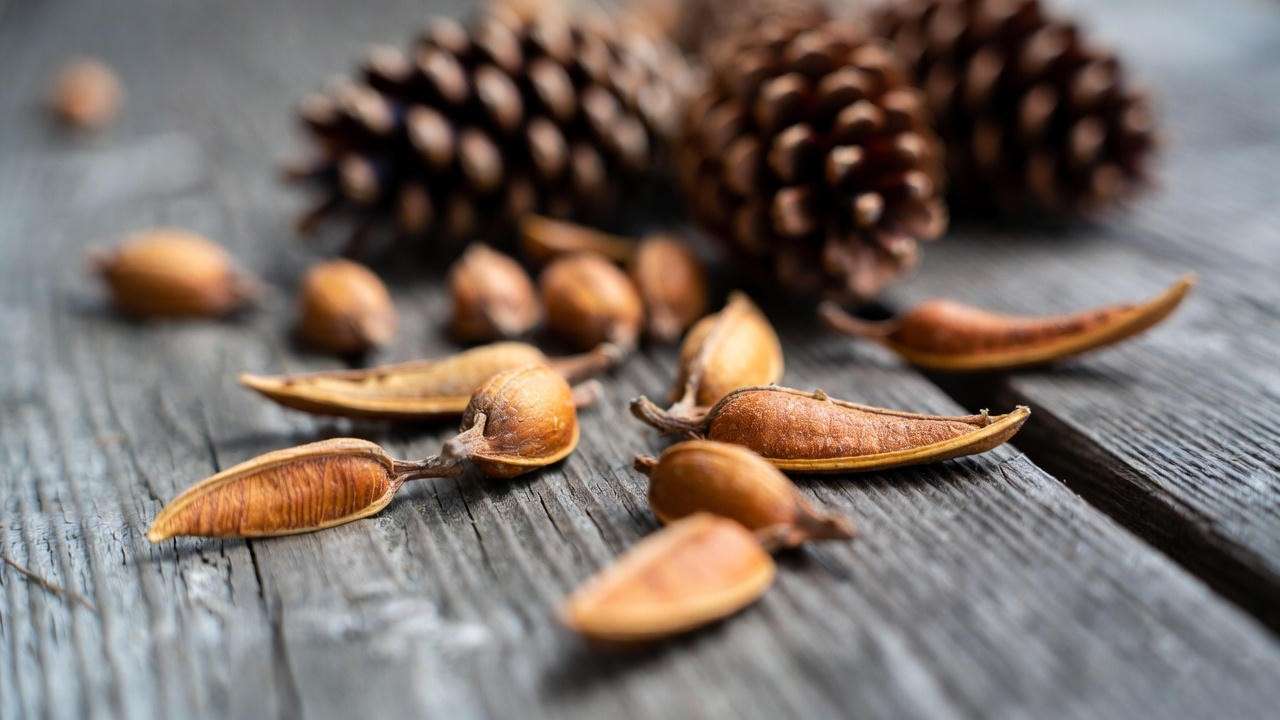
Where to Source Quality Pine Tree Seeds
Quality seeds are critical for success. Purchase from reputable nurseries or seed banks like Sheffield’s Seed Co. or the National Tree Seed Centre. Alternatively, harvest seeds from healthy, mature pinecones in fall, ensuring ethical collection (avoid protected areas). Fresh seeds have higher germination rates, so avoid seeds older than two years.
Seed Dormancy and Stratification Explained
Many pine seeds have a hard coat that requires stratification—a process mimicking natural winter conditions to break dormancy. Cold stratification (storing seeds at 35–40°F in moist media) is common for most pines, lasting 30–90 days depending on the species. Some, like the Stone Pine, may need warm stratification first. You’ll need:
- A container (e.g., ziplock bag).
- Moist medium (e.g., peat moss or sand).
- A refrigerator for consistent temperature.
Tip: Label your containers with the species and start date to track stratification progress.
Step-by-Step Guide to Germinating Pine Tree Seeds 🌱
Germinating a pine tree seed requires precision. Follow these steps to maximize success.
Step 1: Preparing Seeds for Planting
Start by cleaning seeds to remove debris or resin. Soak them in lukewarm water for 24–48 hours to soften the seed coat and remove germination inhibitors. Test viability with the float test: discard seeds that float, as they’re likely non-viable. Gather supplies:
- Lukewarm water.
- Paper towels or a fine mesh strainer.
- Airtight containers for stratification.
Step 2: Stratification Process
Place cleaned seeds in a moist medium (e.g., damp sand or peat moss) inside a ziplock bag. Store in a refrigerator at 35–40°F for the species-specific duration (e.g., 60 days for Eastern White Pine). Check weekly to ensure the medium stays moist but not waterlogged, as excess moisture can cause mold. If mold appears, rinse seeds gently and replace the medium.
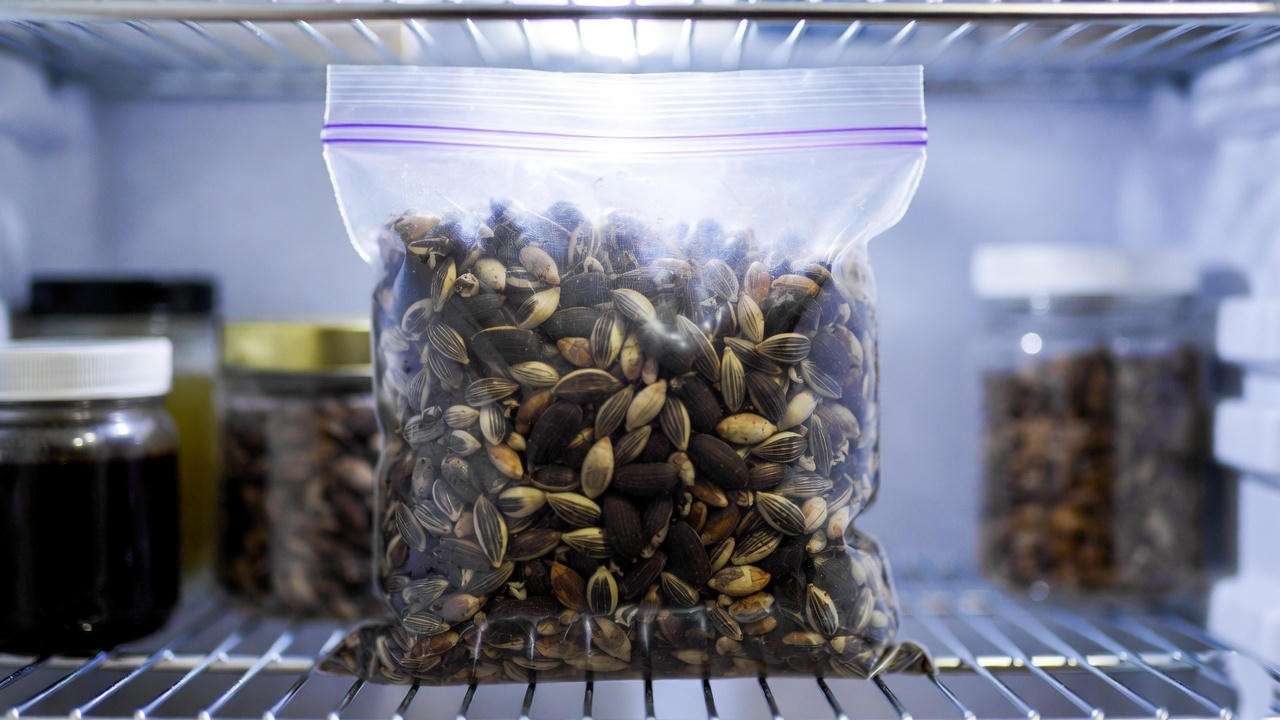
Step 3: Sowing Seeds
Sow stratified seeds in early spring for optimal growth. Use a well-draining soil mix (e.g., 50% potting soil, 50% sand or perlite) in pots or seed trays. Plant seeds ¼–½ inch deep, spacing them 1–2 inches apart. Place trays in a bright location with indirect sunlight and maintain soil moisture without overwatering.
Example: Jane, a Vermont gardener, successfully germinated Scots Pine seeds by stratifying them for 45 days and sowing in a sandy loam mix. Her seedlings sprouted in 3 weeks, and she shared progress photos on her gardening blog, inspiring others.
Caring for Pine Seedlings: From Sprout to Sapling 🌳
Once your pine tree seed sprouts, proper care ensures healthy development.
Creating the Ideal Growing Environment
Seedlings need 6–8 hours of indirect sunlight daily to avoid scorching. Maintain temperatures between 60–75°F and moderate humidity (50–60%). Use pots with drainage holes for container planting, or choose a well-draining garden bed for direct sowing. Indoor setups with grow lights work well for early stages.
Watering and Fertilizing Young Pine Trees
Water seedlings when the top inch of soil feels dry, using a gentle spray to avoid disturbing roots. Overwatering is a common mistake, leading to root rot. Fertilize sparingly—once every 4–6 weeks with a diluted, low-nitrogen fertilizer (e.g., 10-10-10). Watch for signs of stress:
- Yellowing needles: Possible overwatering or nutrient deficiency.
- Wilting: Underwatering or poor drainage.
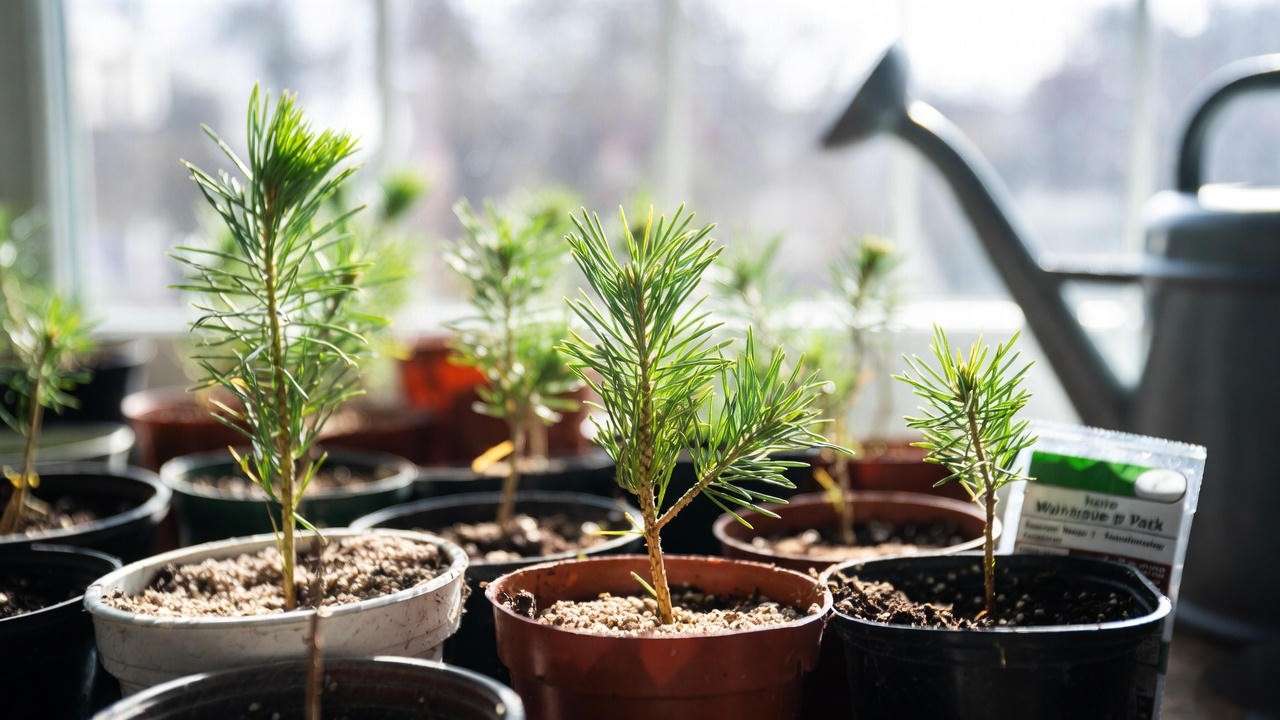
Protecting Seedlings from Pests and Diseases
Seedlings are vulnerable to damping-off fungus, aphids, and rodents. Prevent damping-off by ensuring good air circulation and avoiding overwatering. Use organic neem oil for aphids and place mesh netting around seedlings to deter rodents. Inspect weekly for early signs of trouble, like discolored needles or stunted growth.
Expert Insight: The USDA Forest Service recommends mulching around seedlings with 1–2 inches of organic mulch (e.g., bark chips) to retain moisture and deter pests, but keep mulch away from the stem to prevent rot.
Transplanting Pine Seedlings: Setting the Stage for Growth 🌲
Transplanting is a critical milestone for your young pine tree.
When to Transplant
Transplant seedlings when they’re 6–12 months old, typically 4–8 inches tall with a robust root system. Early spring or fall is ideal, as cooler temperatures reduce transplant shock.
Choosing the Right Location
Pines thrive in slightly acidic, well-draining soil (pH 5.5–6.5). Test your soil and amend with organic matter if needed. Choose a site with full sun and enough space for the tree’s mature size (e.g., Ponderosa Pines can reach 60–100 feet). Avoid planting near buildings or power lines.
Transplanting Techniques
- Dig a hole twice the width of the root ball and as deep as the roots.
- Gently remove the seedling, keeping roots intact.
- Place in the hole, ensuring the root collar is level with the soil.
- Backfill with soil, water thoroughly, and add 1–2 inches of mulch.
- Stake if needed to stabilize against wind.
Tip: Apply a root stimulator (available at garden centers) during transplanting to encourage root growth and reduce shock.

Long-Term Care for Thriving Pine Trees 🌴
Once your pine seedling is established, ongoing care ensures it grows into a healthy, mature tree. Proper maintenance supports vigorous growth and resilience against environmental challenges.
Pruning and Shaping Young Pines
Pruning young pines promotes healthy structure and prevents disease. Begin pruning in the second or third year, focusing on:
- Removing dead or damaged branches.
- Thinning crowded areas to improve air circulation.
- Shaping for aesthetic appeal (e.g., maintaining a conical form for Christmas tree varieties).
Use clean, sharp pruning shears to make clean cuts at a 45-degree angle just above a bud. Avoid over-pruning, as removing more than 25% of the foliage can stress the tree. Prune in late winter or early spring when the tree is dormant to minimize sap loss.
Tip: Disinfect pruning tools with rubbing alcohol between cuts to prevent disease spread.
Ongoing Maintenance
As pines mature, their care needs evolve:
- Watering: Young pines need regular watering (1–2 inches per week) for the first 2–3 years. Mature pines are drought-tolerant but benefit from supplemental watering during prolonged dry spells.
- Fertilizing: Apply a slow-release, low-nitrogen fertilizer (e.g., 10-10-10) once annually in spring for the first 3–5 years. Over-fertilizing can burn roots, so follow package instructions.
- Monitoring: Check for signs of stress, such as browning needles, sparse growth, or leaning trunks. These may indicate nutrient deficiencies, pests, or soil issues.
Regular soil testing (every 2–3 years) ensures optimal pH and nutrient levels. If the soil becomes too alkaline, amend with sulfur to maintain the ideal 5.5–6.5 pH range.
Protecting Mature Pines from Environmental Stress
Mature pines face threats from drought, extreme cold, high winds, and pests. To protect them:
- Drought: Mulch around the base (3–4 inches deep, keeping it 2 inches from the trunk) to retain moisture. Water deeply during dry periods.
- Cold: Wrap young trees with burlap in harsh winters to shield from windburn. Avoid fertilizing late in the season, as new growth is frost-sensitive.
- Winds: Stake young trees in windy areas and ensure proper spacing to prevent root instability.
- Pests and Diseases: Watch for pine bark beetles, needle blight, or rust. Apply organic treatments like neem oil or consult an arborist for severe infestations.
Example: A Colorado gardener grew a Ponderosa Pine from seed to a 10-foot tree in five years by mulching annually, watering during droughts, and inspecting for bark beetles. Their success highlights the importance of consistent care.
Common Mistakes to Avoid When Growing Pine Trees from Seed 🚫
Even experienced gardeners can make errors when growing pines from seed. Avoid these pitfalls to ensure success:
- Overwatering: Soggy soil leads to root rot, especially in seedlings. Use well-draining soil and water only when the top inch is dry.
- Skipping Stratification: Many pine seeds won’t germinate without cold stratification. Always check species-specific requirements.
- Planting in Unsuitable Locations: Poor soil, inadequate sunlight, or cramped spaces stunt growth. Test soil and choose a spacious, sunny site.
- Neglecting Pest Control: Ignoring early signs of pests or diseases (e.g., yellowing needles, sticky sap) can doom young trees. Inspect regularly and act promptly.
Tip: Keep a gardening journal to log stratification dates, germination rates, and seedling progress. This helps identify patterns and refine your approach for future plantings.
Environmental and Aesthetic Benefits of Pine Trees 🌍
Pine trees are more than just beautiful additions to your landscape—they’re environmental champions. A single mature pine can:
- Sequester Carbon: Absorb up to 48 pounds of CO2 annually, per the National Arbor Day Foundation, combating climate change.
- Purify Air: Filter pollutants and release oxygen, improving air quality.
- Support Wildlife: Provide habitat for birds, squirrels, and beneficial insects.
- Prevent Erosion: Deep roots stabilize soil on slopes or near water bodies.
Aesthetically, pines offer year-round greenery, making them ideal for privacy screens, windbreaks, or festive holiday trees. In permaculture or reforestation projects, pines restore degraded landscapes and enhance biodiversity.
Expert Insight: The U.S. Forest Service highlights pines’ role in reforestation, noting that species like the Loblolly Pine are planted extensively to restore ecosystems and support timber industries.
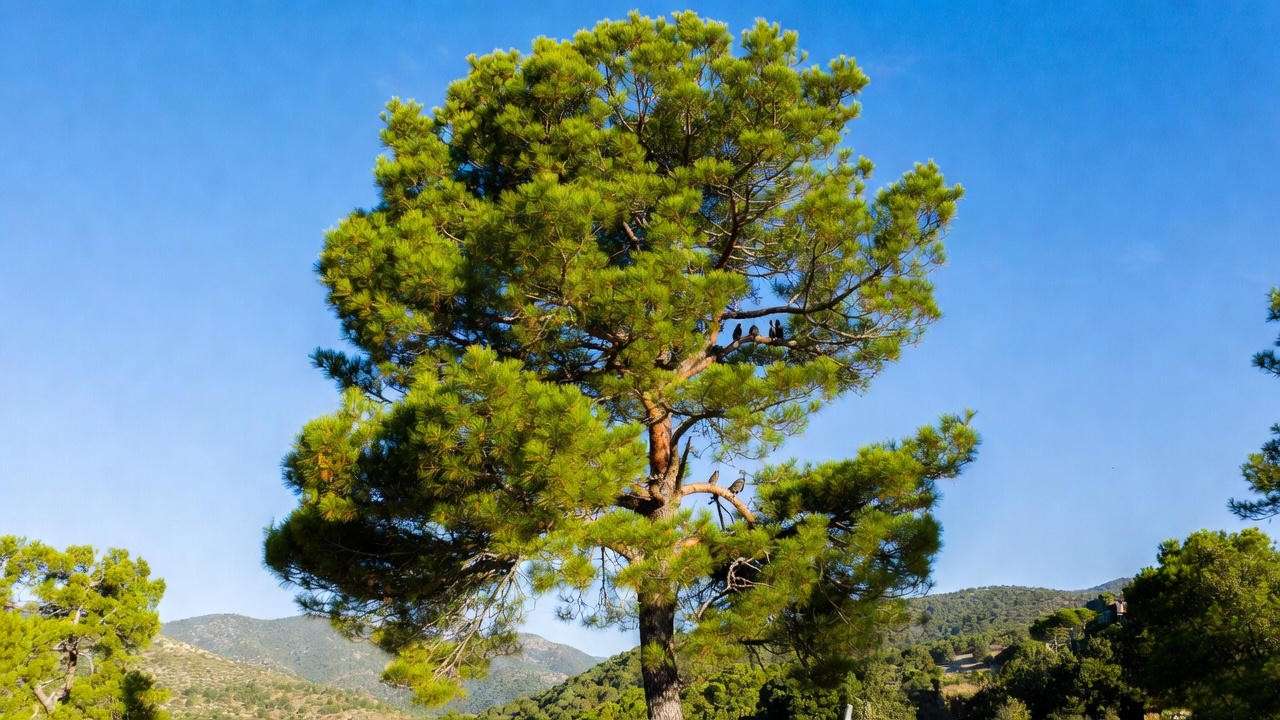
FAQs About Growing Pine Trees from Seed ❓
Q1: How long does it take for a pine tree seed to germinate?
A: Germination typically takes 2–6 weeks after stratification, depending on the species and conditions. For example, Scots Pine may sprout in 2–3 weeks, while Ponderosa Pine can take longer.
Q2: Can I grow pine trees indoors?
A: Yes, but only temporarily. Seedlings can be started indoors under grow lights, but pines need outdoor conditions (full sun, space) to thrive long-term.
Q3: What’s the best pine species for beginners?
A: Scots Pine and Eastern White Pine are beginner-friendly due to their reliable germination and adaptability to various climates.
Q4: How do I know if my pine seeds are viable?
A: Use the float test—seeds that sink in water are likely viable, while floaters are often non-viable. Fresh seeds from reputable sources have higher success rates.
Q5: How often should I water pine seedlings?
A: Water when the top inch of soil is dry, typically every 3–5 days. Ensure good drainage to prevent root rot.
Conclusion: Your Journey to Growing a Thriving Pine Tree 🌲
Growing a pine tree from seed is a journey of patience, care, and connection with nature. From selecting quality seeds and mastering stratification to nurturing seedlings and transplanting saplings, each step builds toward a thriving tree that enhances your landscape and the environment. By avoiding common mistakes and following expert techniques, you’ll create a legacy that lasts generations.

